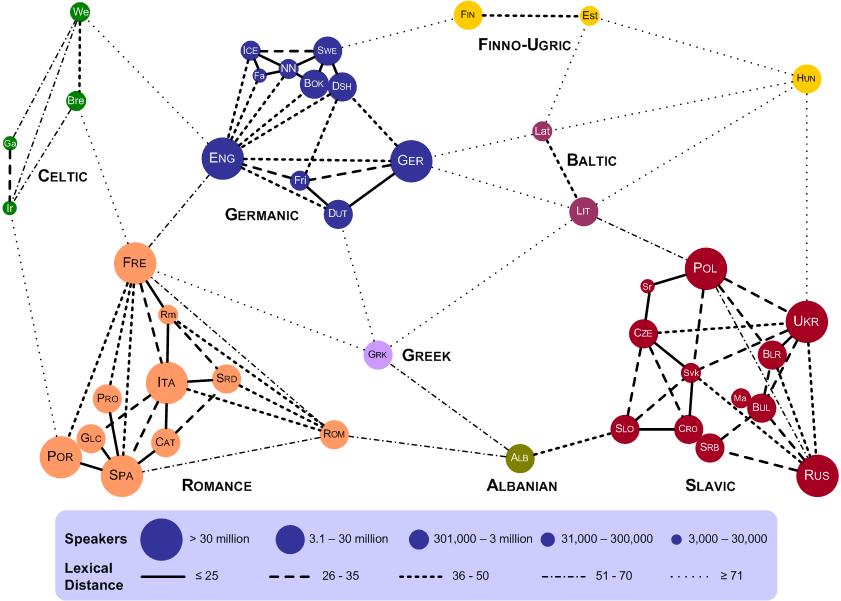Have you ever wondered why English is considered a Germanic language, yet borrows many words from French? In her map of the lexical distances between European languages, writer Teresa Elms uses linguistic research by Kostiantyn Tyshchenko in Metatheory of Linguistics to demonstrate the vocabulary divergence among all the major languages of Europe.
In the chart, the further apart two languages are, the fewer words they have in common, while the closer two languages are, the more words they have in common. The size of each circle represents the number of people who speak that language, and each color represents a different language group (i.e. blue represents Germanic languages).
Looking at the chart, you may be wondering why English, a Germanic language, is so close to French, a Romance Language. Elms explains that the Norman Conquest in the 10th Century introduced new vocabulary into English, so that 75% of modern English comes from French and Latin. Despite the new words, however, the way people spoke English didn’t change drastically. Elm notes:
So why is English still considered a Germanic language? Two reasons. First, the most frequently used 80% of English words come from Germanic sources, not Latinate sources. Those famous Anglo-Saxon monosyllables live on! Second, the syntax of English, although much simplified from its Old English origins, remains recognizably Germanic. The Norman conquest added French vocabulary to the language, and through pidginization it arguably stripped out some Germanic grammar, but it did not ADD French grammar.
What other interesting linguistic connections can you find in Elms’ chart?
Chart by Teresa Elms
via FlowingData



